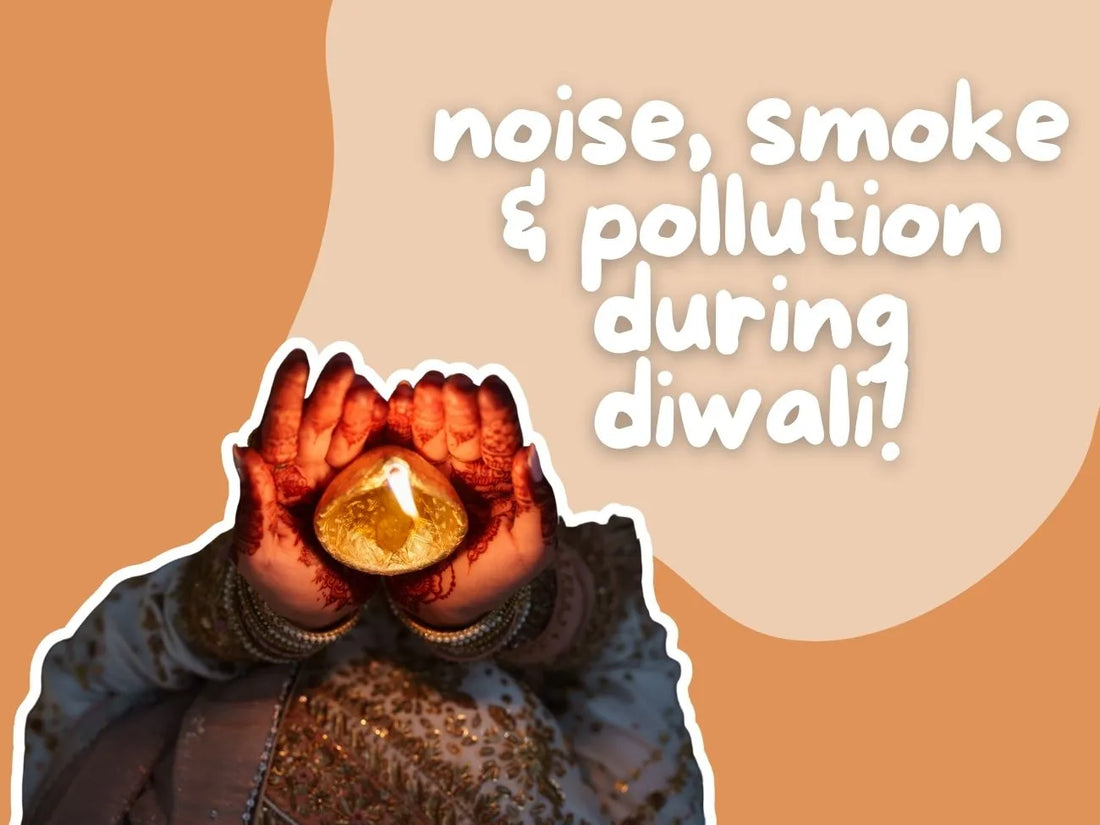
Noise, Smoke & Pollution: How Firecrackers Affect Children’s Health
Share
Every Diwali, the night sky fills with bursts of color and sound. Children look up in awe, hands clapping as the sparks dance, a sight that never fails to excite. But behind those bright flashes lies something less beautiful, the invisible haze of smoke, chemicals, and noise that lingers long after the fireworks fade.
Firecrackers may look harmless, but the tiny explosions they create release thousands of microscopic particles and toxic gases into the air. These pollutants don’t just cloud the sky; they make their way into the air children breathe, the water they drink, and even the skin they live in.
For growing kids with developing lungs, delicate ears, and sensitive skin, that can mean more harm than we realize.
The Noise Nobody Thinks About
- Children often see loud crackers as the most exciting part of Diwali, but it’s the noise that can do the most unseen damage.
- The sound of a typical firecracker ranges between 120 to 150 decibels, louder than a jet engine taking off. For kids, whose eardrums are thinner and more sensitive, that level of sound can cause temporary or even permanent hearing loss.
- Beyond the ears, loud noise triggers a physical stress response. It can cause anxiety, irritability, sleep disturbances, and even affect heart rate. Parents may notice their children becoming unusually jumpy, anxious, or unable to concentrate during and after festive nights. These are real signs of noise fatigue.
- For children on the autism spectrum or those sensitive to sensory overload, loud fireworks can be especially distressing, causing confusion or emotional meltdowns.
The Smoke That Lingers
The smoke that hangs in the air after a round of fireworks contains sulphur dioxide, nitrogen oxides, and fine particulate matter (PM2.5), pollutants small enough to enter the bloodstream through the lungs.
Children breathe faster than adults, which means they inhale more of these pollutants per minute. This can lead to:
-
Coughing, throat irritation, and wheezing
-
Shortness of breath or chest tightness
-
Triggered asthma attacks or respiratory infections
For children with asthma or allergies, even a few minutes outdoors in heavy smoke can lead to hours of discomfort.
What’s worse, these particles don’t disappear when the night ends. They stay suspended in the air, settling on clothes, skin, and hair, causing irritation long after the celebration is over.
Pollution Beyond the Night
- In cities where Diwali fireworks are widespread, the Air Quality Index (AQI) can spike up to ten times higher than safe levels. The smog created mixes with winter air and traps toxins close to the ground, exactly where children play, breathe, and sleep.
- This pollution doesn’t just irritate the eyes and lungs; it weakens immunity and affects energy levels. Many parents notice post-Diwali fatigue or increased illness in their kids, a direct result of the air quality dip.
- Even indoors, microscopic residues of burnt chemicals can settle on surfaces, soft toys, and bedding, exposing children to allergens without them even stepping outside.
Skin Health: The Hidden Victim
While breathing issues and noise get most of the attention, skin is one of the first organs affected by Diwali pollution. The mix of smoke, dust, and metal particles can:
-
Clog pores, leading to rashes and breakouts
-
Cause dryness, itchiness, or redness on exposed areas like the face and arms
-
Irritate sensitive or eczema-prone skin
-
Leave behind an oily residue that attracts more dust
Children’s skin is thinner and less capable of holding moisture, so the effects appear faster. The combination of sweets, sweat, and smoke particles can leave their skin feeling irritated or sticky or dry.
Tuco Kids offers gentle solutions like the Soothing Gel and Dry Skin Care Range, which soothe irritation, calm sensitive skin, and restore moisture without harming the natural barrier. The brand also provides a mild hair care range and a safe makeup line with soft lip balms and tints, making daily care simple, effective, and safe for growing kids.
What Parents Can Do
You don’t have to stop celebrating to stay safe. A few mindful changes can make a big difference:
-
Choose open spaces for fireworks to avoid smoke buildup.
-
Avoid loud or chemical-heavy firecrackers and opt for green ones if needed.
-
Keep children at a safe distance and ensure they wear cotton clothes (not synthetic).
-
Limit exposure time outdoors and use masks if the air quality is poor.
-
Encourage indoor celebrations like diya lighting, music, storytelling, or eco-friendly crafts.
Simple steps create big change for the planet and for children’s well-being.
The Light We Leave Behind
The magic of Diwali lies not in how loud it is, but in how deeply it connects families. When parents choose safety and sustainability, they teach their children the real essence of the festival, joy without harm and light without smoke.
This year, let the loudest part of Diwali be the laughter, not the fireworks. Let the glow stay on your child’s face, not in the air. Because the brightest celebrations are those that leave behind light, not pollution.

